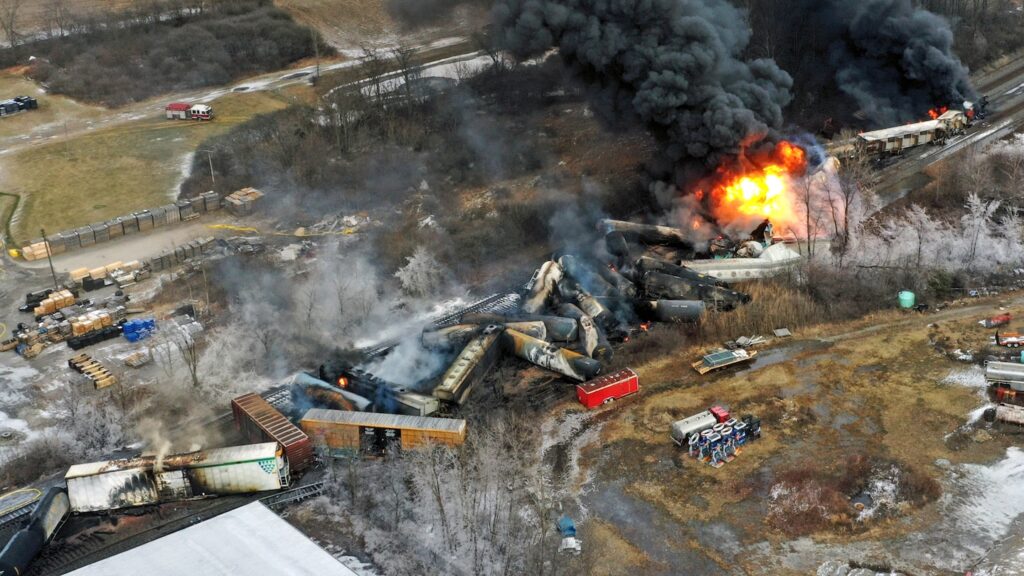“No community should have to go through what East Palestine residents have faced,” said EPA Administrator Michael Regan in a statement Friday. He added that the legal action would ensure the railroad “cleans up the mess they made and pays for the damage they have inflicted as we work to ensure this community can feel safe at home again.”
The government is asking that Norfolk Southern be “held accountable” for polluting waterways and forced to pay penalties under the Clean Water Act in addition to the cost of the cleanup. The Environmental Protection Agency took control of the cleanup on Feb. 21.
The Justice Department is asking for penalties of $64,618 a day for every violation of the Clean Water Act as well as civil penalties of $55,808 a day or $2,232 per barrel of oil or hazardous substance. Costs could mount as each part of the train crash could invoke separate penalties.
Thirty-eight cars derailed in the accident; at least 11 of those were carrying hazardous materials, the department said in its suit. It said that exposure to those materials could cause an “increased risk of cancer; risks to fetal development; damage to organs like the liver, kidneys, lungs, and skin; and other health conditions.”
On Feb. 5, Norfolk Southern also vented and burned the contents of five rail cars containing vinyl chloride to prevent an explosion.
On its website, the company says that it has provided $27.9 million to the East Palestine community, but the cleanup is expected to cost far more than that.
“Our job right now is to make progress every day cleaning up the site, assisting residents whose lives were impacted by the derailment and investing in the future of East Palestine and the surrounding areas,” said Connor Spielmaker, a spokeswoman for Norfolk Southern. “We are working with urgency, at the direction of the U.S. EPA, and making daily progress. That remains our focus and we’ll keep working until we make it right.”
The Justice Department said that the company’s annual reports show that as much as 80 percent of executives’ pay is tied to performance.
It also said that the drop in operating costs at the railway included reductions in spending to repair, service and maintain locomotives and freight cars, perform train inspections, and pay engine crews and train crew, suggesting that lower costs had been tied to the accident.
This is a developing story and will be updated.

